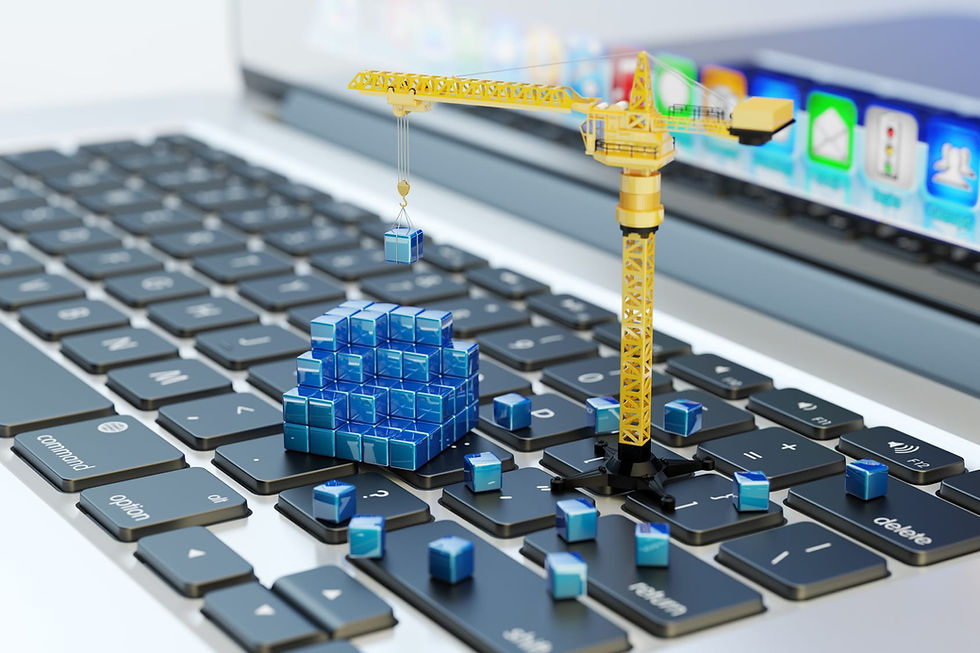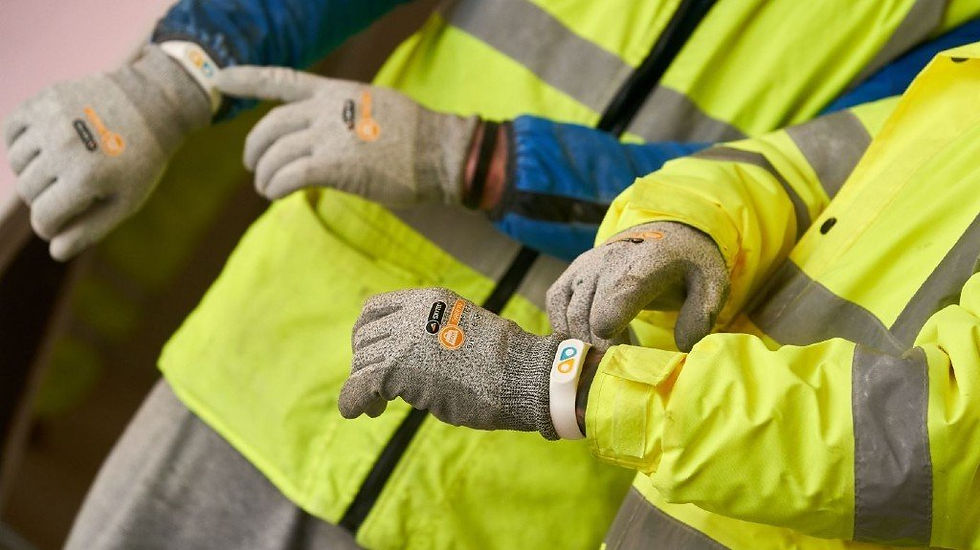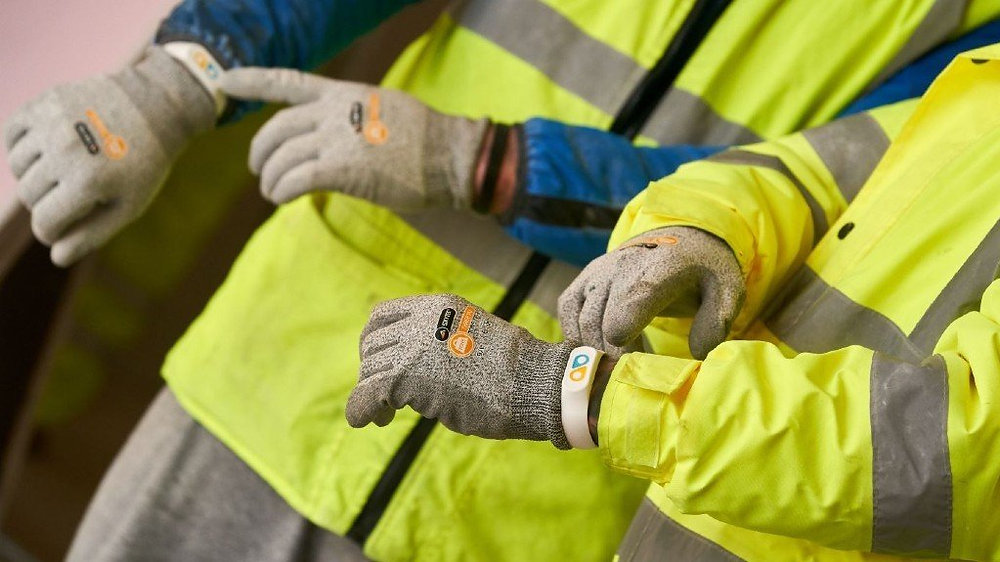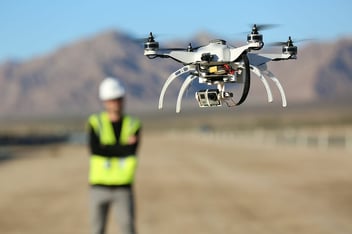For an industry that has had the unfortunate reputation of being 'slow to adopt', technology in construction has truly come a long way. We're finally starting to see companies really begin to innovate in terms of applying technology towards solving important, long-standing industry challenges.
And while technology adoption has been trending upwards in the industry for the last few years, 2020 marked a huge turning point when the industry experienced an event unlike anything it has ever seen before: the COVID-19 pandemic. Faced with the extreme uncertainties surrounding the pandemic and how this will change not just the industry but the entire world, construction businesses turned to technology for help.
Construction collaboration and remote monitoring tools moved to the forefront as the need for such tools had never been more obvious. For any construction teams who were seriously considering deploying such solutions before the pandemic, the transition to adopt during the pandemic was clear and quick. This shift marked a new chapter for the industry. The pandemic has really become the catalyst that the industry badly needed to help it move toward adopting useful technologies to improve both business and operational outcomes.
The construction technology wave is finally here and collaboration tools are just the tip of the iceberg. Larger construction enterprises have been experimenting with the use of new technologies for a while (kind of easy if you have a big budget for it), but what about small to mid-size businesses? Which technology trends are more reasonable and practical for us to explore?
Here are three game-changing technology trends that you can explore today, which will take this industry to new heights for many years to come.
1. Workflow Automation

Workflows are at the core of nearly everything in construction, from tracking employee time and managing detailed project financials, to collaborating with external parties from pre-build through to closeout. Baked in to each construction business is its own set of workflows which dictate how the business operates and delivers value to its various project stakeholders. With all the moving parts in construction, it's critically important to make sure your workflows are as efficient as possible and this has a direct impact on profits.
Unfortunately, this is exactly where the industry fell behind. For far too long, construction businesses of all sizes have relied on manual input as the primary method for managing most workflows. Whether you were manually inputting information into paper and spreadsheets, standard ERP software, or even typing up an email, the input method was the same. The problem: manual input is both time-consuming and always lags behind the actual work itself.
Manual input means that construction managers receive important information after the fact and, in many cases, after it's too late. This makes it much harder to proactively manage project risks such as any cost overruns or potential build issues. If you're constantly waiting around for someone to enter information, you have no real-time visibility whatsoever. Whether you realize it or not, this is costing you a lot of money. It's time we change this!
Workflow automation to the rescue. Instead of relying on manual input, workflows should be automated to save everyone loads of time. Why wait for someone to send or input information when you can have technology do this for you automatically?
Let's look at just one simple example to illustrate this point: time tracking.
Most of us track labour hours using some sort of timesheet. These timesheets can be a printed piece of paper you hand to your field team, a spreadsheet that supervisors manage, or some sort of timesheet software solution for employees to plug in their hours. Not only do these approaches require time, but they are also highly prone to input errors and time theft, which can cost companies up to 15% of their annual gross payroll costs. Yikes.
So how do we automate time tracking? Simple... ditch the timesheets! Instead, deploy a real-time time tracking solution where workers quickly clock in and out, take breaks, and post progress updates in real-time. Each of these actions would become a standard part of their shift and, in doing so, no one needs to think twice about logging their hours, it's done automatically.

Managers will always be able to see everyone's up-to-date hours without anyone ever needing to manually fill out a timesheet ever again. Better yet, you can even integrate such a system into your accounting software to completely automate the payroll process. Time tracking data would simply be sent to the accounting software at the end of the pay period, where it can then be processed. Everyone's time representation is accurate and honest, while eliminating time wasted, input errors, and time theft.
Time tracking is one of many examples, as you can automate workflows for communications, document management, field forms, reporting, and much more. To start the process, the first step is simply to ask yourself, "which workflows are costing my organization lots of time and money?"
Once you're aware of the waste, you can then take the next step to explore a powerful construction workflow automation tool such as Ontraccr. Ontraccr is a simplified field and project management solution that helps your organization automate tedious and time-consuming workflows, while giving you real-time visibility into the job site. You can use Ontraccr to track time automatically, communicate with your entire team, receive instant job site updates, manage all your project documents, automate field forms, and much more.
Give us a shout if you're ready to get started today! Ontraccr also offers custom workflow development so if you have any specific needs around automating existing wasteful workflows, our team would love to learn more so we can propose a solution just for you.
If you want to learn more about how an integrated field management solution can help your business, check out our article here. This is a must read for all supervisors and we explain in detail the benefits of having a fully featured field management software.
2. Machine Learning

The next technology step for the industry, right after workflow automation, is to leverage Artificial Intelligence (AI). AI is a category in itself that covers many different technologies, and there are many ways in which AI can process data and instruct other systems. However, one incredibly useful technology within the AI field is Machine Learning (ML).
Machine Learning is a method of data analysis based on the idea that systems can learn from data, identify patterns and make decisions with minimal human intervention. The idea here is that, over time, ML algorithms can learn from a constant influx of data to gain more and more intelligence in terms of pattern recognition.
For example, let's say you want your ML algorithm to be able to proactively identify a potential financial risk such as projecting a cost overrun in one of your projects. The algorithm would first need to analyze past project datasets to identify any patterns and correlations in the data that led to cost overruns. Now, this may of course not be that straightforward as these patterns are not always consistent and there are many different issues that can lead to different cost overruns. But this is where the ML algorithm would simply observe all the variations in the data that led to that specific cost overrun outcome. Now that it has a good idea of some of the specific sequences that can lead to these financial impacts, it can continue to analyze any current project datasets to become smarter at identifying the various triggers that can lead to the outcome. Once the ML algorithm gains this level of intelligence, it can now apply its knowledge in a predictive manner to warn you the next time it observes anything in the data that could potentially lead to the financial risk.
Of course, the above example is oversimplified, but I'm simply using it to illustrate the high-level concept of how ML could be applied.
In order to make use of ML, you must have a sizeable dataset for it to analyze. Basically, ML is not useful if it doesn't have much data to play with. Lucky for us, construction projects create a ton of data on an ongoing basis. This makes construction an ideal target for ML-driven data sophistication. Imagine having another player on your team whose sole job is to constantly analyze your data and come to you when they see something fishy. That's the power of adding ML to your team.
ML can help you mitigate risk, improve productivity, predict future project outcomes, aid in scheduling, and much more. The sky is truly the limit once ML is given a proper chance to help the construction industry.
3. Wearables

It goes without saying that safety is paramount in construction and it always will be. The pandemic has also forced us to think about new ways to keep our teams safe out in the field. From wearing PPE to ensuring social distancing, these were policies we never thought we'd need to enforce. On the other hand, these policies have forced companies to assess what crews wear on the job site.
So while we're thinking about what's being worn, aside from PPE, let's now take it a step further. How about equipping our field crews with sensors that can read biometric signals to notify safety managers if an employee is suffering from over-exhaustion? Or motion sensors that can notify managers when an employee has fallen or had a major collision with another object onsite?
Cue wearable technology. Wearables are now being built into all kinds of construction apparel such as safety vests, gloves, hard hats, and work boots. Embedded biometric sensors can measure vital signs like heart rate, skin and body temperature, and more to monitor an employee's health throughout their work activity. Motion sensors can detect sudden movements, impacts, variations in walking patterns, and more to keep an eye on any more immediate safety concerns.
Being able to constantly monitor worker safety will alleviate a lot of pressure operators face in the construction industry, drastically reducing both the fatality and injury rates. Not to mention reducing the financial burden companies could face due to liability issues. This will enable companies to focus more on the actual work itself while knowing that technology will always be monitoring the health and well-being of workers.
Above and beyond safety, wearables can also be embedded with other technology such as cameras and GPS modules. Paired with Artificial Intelligence, these additional functions can unlock new productivity-based workflows such as automatically tracking project progress based on image and location recognition patterns over time.
There's a lot for me to geek out over here, but for now I will leave it at this: wearables are a very real future for construction and, simply put, will change field operations forever.
Final Thoughts
There has never been a better time for technology adoption in construction. The pandemic has jump-started the process of digitizing construction businesses all over the globe, introducing organizations to new ways of working and incredible efficiency improvements across the board. After the recent adoption of construction collaboration and remote monitoring software applications, we could start seeing some huge advancements in the areas of workflow automation, machine learning, and wearable technologies.
But in order for the industry to keep moving forward and become more tech-savvy, we need all of our owners, executives, managers, and field workers to remain open-minded and keep exploring new technology advancements. Technology changes our lives constantly. The worst thing we can do to ourselves is close ourselves off from tools that could save us huge amounts of time and money. Don't underestimate the power of technology and how it can change the way you operate.
Sometimes technology just needs a bit of help to understand how it can be applied to someone's problem. With the right guidance and exploration, we can mould technology in all the right ways to move the entire industry forward together.
If you enjoyed this article, join our mailing list down below to receive our monthly newsletter and stay up-to-date on what Ontraccr is developing to help digitize the construction industry.






